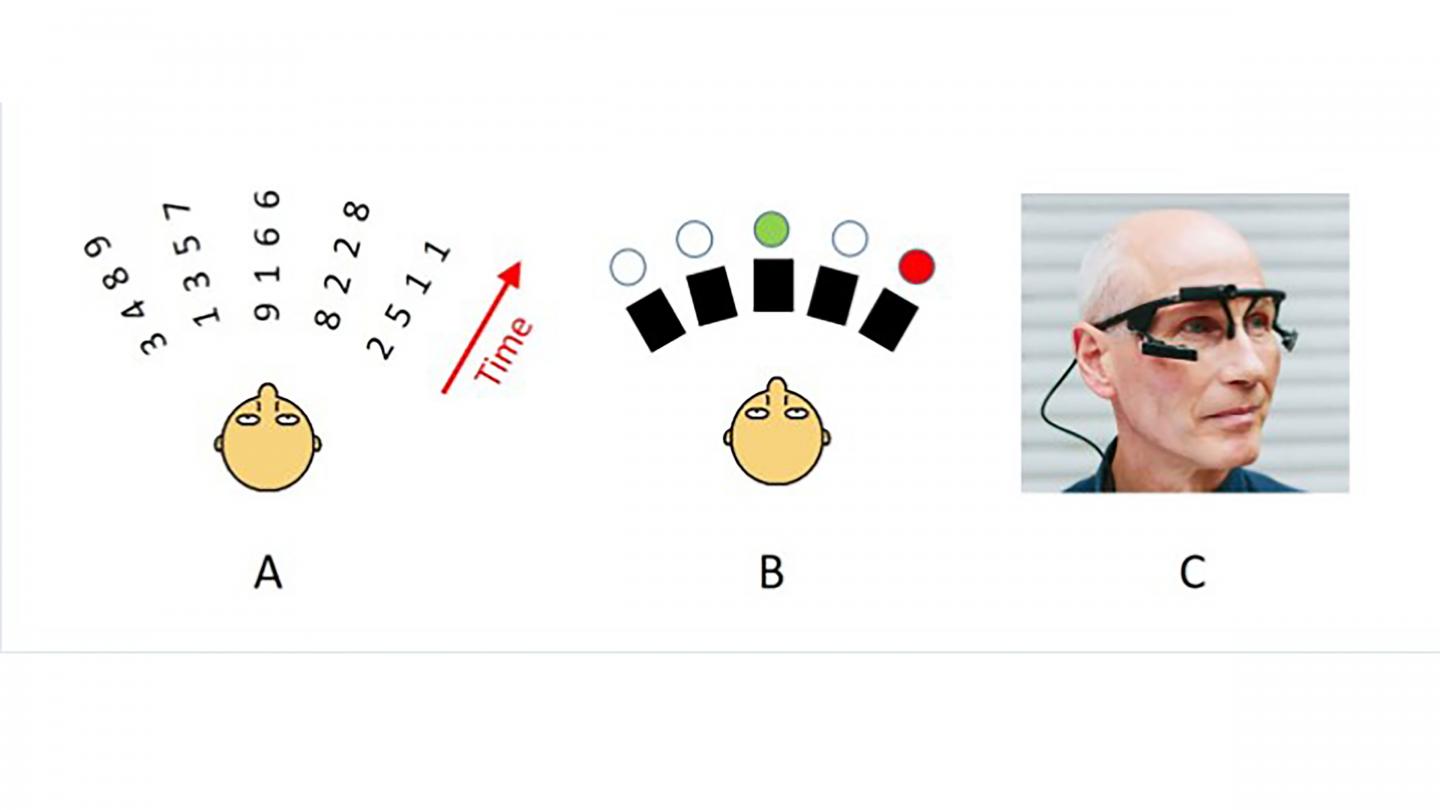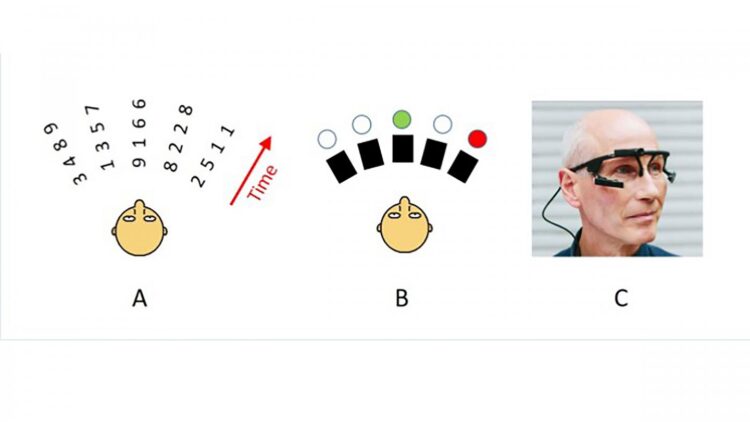Eye position has a modest but measurable impact on speech intelligibility within a cocktail party setting.

Credit: Virginia Best
MELVILLE, N.Y., December 9, 2020 — Several acoustic studies have shown that the position of your eyes determines where your visual spatial attention is directed, which automatically influences your auditory spatial attention. Researchers are currently exploring its impact on speech intelligibility.
During the 179th Meeting of the Acoustical Society of America, which will be held virtually Dec. 7-10, Virginia Best, of Boston University, will describe her work to determine whether there is a measurable effect of eye position within cocktail party listening situations. Her poster session, “An effect of eye position in cocktail party listening,” will start at 9:30 a.m. on Wednesday, Dec. 9.
A “cocktail party” in their work refers to four competing talkers in addition to the talker for whom you are trying to pay attention.
“Our primary motivation was an intuition that eye position may be especially critical within these situations, where there is substantial energetic and informational masking,” said Best. “A secondary motivation was our interest in visually guided beamforming, where the eyes are used to steer a highly directional hearing aid.”
Best and colleagues presented participants with sequences of digits from five loudspeakers positioned in front of the listener with a spacing of 15 degrees and asked them to repeat back the digits presented from one target loudspeaker.
In some cases, participants were asked to visually fixate on the target loudspeaker. In others, participants were asked to visually fixate on a nontarget loudspeaker.
During these tasks, participants’ head position was stabilized on a neck rest, and their eye position was monitored with an eye tracker. Performance was best when eye fixation was on target, and it suffered when eye fixation was off target.
This shows an influence of eye position within multi-talker situations, even without visual information such as lip reading, according to Best. It suggests optimal performance depends on the spatial alignment of auditory and visual attention.
“Our task is theoretically applicable to any situation in which there are competing voices, including parties, restaurants, and meeting rooms,” Best said. “The reason we spend a lot of time studying these situations is because they are extremely difficult for people with hearing impairment and hearing aids.”
###
MORE MEETING INFORMATION
USEFUL LINKS
Main meeting website: https:/
Technical program: https:/
Press Room: http://acoustics.
WORLDWIDE PRESS ROOM
In the coming weeks, ASA’s Worldwide Press Room will be updated with additional tips on dozens of newsworthy stories and with lay language papers, which are 300-500 word summaries of presentations written by scientists for a general audience and accompanied by photos, audio, and video. You can visit the site during the meeting at http://acoustics.
PRESS REGISTRATION
We will grant free registration to credentialed journalists and professional freelance journalists. If you are a reporter and would like to attend, contact the AIP Media Line at 301-209-3090. For urgent requests, staff at [email protected] can also help with setting up interviews and obtaining images, sound clips or background information.
VIRTUAL MEDIA BRIEFINGS
Press briefings will be held virtually during the conference. Credentialed media can register in advance by emailing [email protected] include your full name and affiliation in the message. The official schedule will be announced as soon as it is available and registered attendees will be provided login information via email.
ABOUT THE ACOUSTICAL SOCIETY OF AMERICA
The Acoustical Society of America (ASA) is the premier international scientific society in acoustics devoted to the science and technology of sound. Its 7,000 members worldwide represent a broad spectrum of the study of acoustics. ASA publications include The Journal of the Acoustical Society of America (the world’s leading journal on acoustics), Acoustics Today magazine, books, and standards on acoustics. The society also holds two major scientific meetings each year. For more information about ASA, visit our website at http://www.
Media Contact
Media Contact
[email protected]





